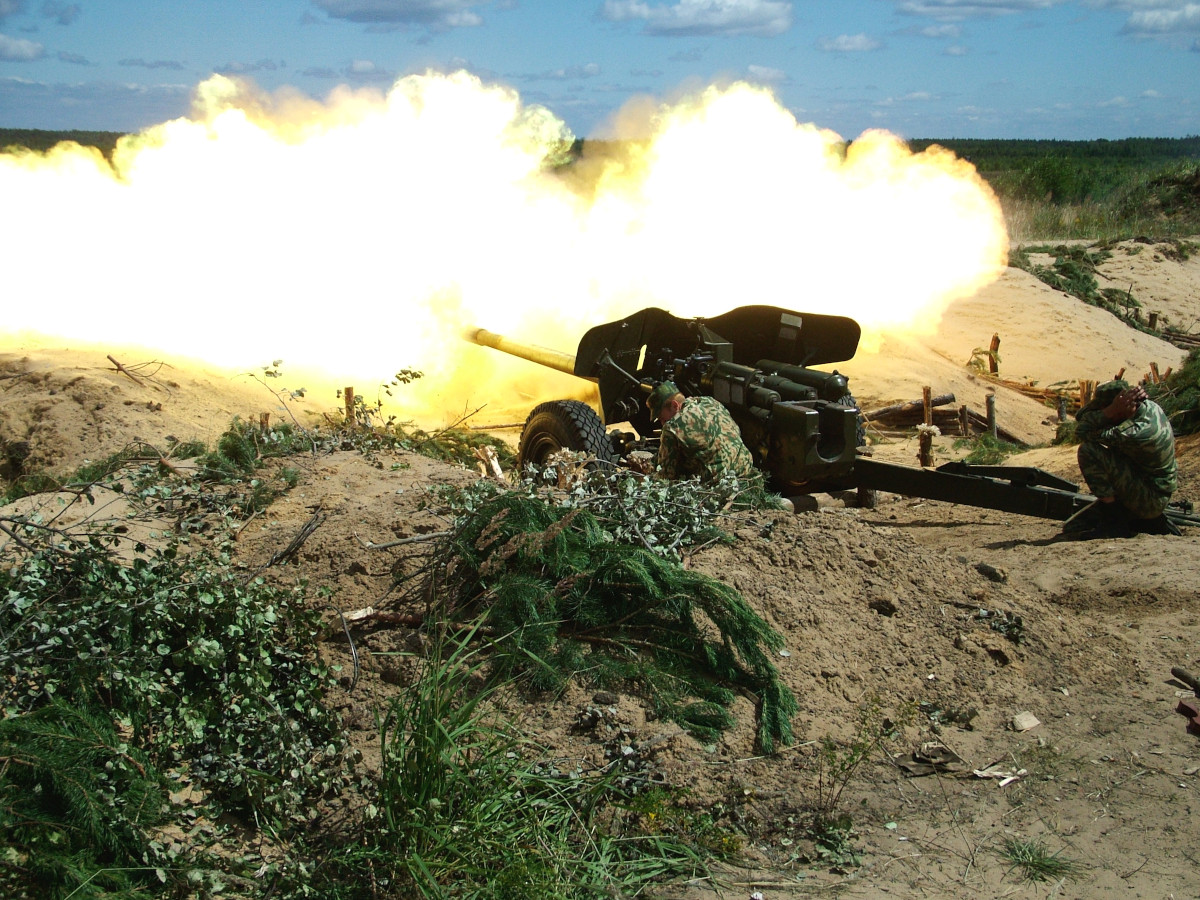The Russian Army used a Cold War-era 100mm towed anti-tank gun to help put out an oil well fire in Siberia earlier this week. Troops used the weapon to blast away the wellhead, which had failed, from a safe distance.
The Russian Ministry of Defense released a video of the operation, seen below, along with a brief statement, on June 8, 2020. The fire, which was the result of a sudden depressurization of the wellhead, occurred the day before in the remote Ust-Kutsky district of the country’s Irkutsk region. The Russian military says it flew the MT-12 anti-tank gun, as well as gunners from Russia’s Central Military District, also known by the Russia abbreviation TsVO, in from the Samara region, more than 2,000 miles to the West.

The troops shot multiple rounds at the well-head from just under 187 yards away, the closest they could get to the raging fire, breaking it off with “a jeweler’s precision,” according to the Russian Ministry of Defense’s statement. “This helped set up the blowout prevention equipment to then seal the well and put out the fire,” that press release added.
Though not mentioned specifically in the Russian Ministry of Defense’s statement, firing explosive shells at the wellhead could have also helped in putting out the fire directly by using the blasts to choke off the oxygen fueling it – just like a blowing out a candle, but on a much larger scale. Explosive charges have been used in oil well fire fighting for this exact purpose in the past, including notably in Kuwait after retreating Iraqi troops set oilfields alight during the First Gulf War in 1991.

Explosives, including artillery shells and even air-dropped bombs, are sometimes employed to fight forest fires in hard to access areas based on the same principle. In July 2018, a Swedish Air Force JAS 39C Gripen fighter jet notably dropped a 500-pound class GBU-49/B Paveway precision-guided bomb to help smother a forest fire that had spread onto a military firing range. Firefighters couldn’t get at it on the ground due to the risk of unexploded ordnance.
Some countries have also employed firefighting vehicles equipped with jet engines to blow out large fires, especially in oil fields. You can read more about these systems, and other curious applications of jet engines on the ground, in this past War Zone piece.

It’s also not the first time the Russian military has deployed novel capabilities to help fight large fires, either. The Russian Ministry of Defense sent two unmanned firefighting vehicles to help contain the blaze at an ammunition depot in Siberia after it suffered a massive explosion last year.
However, using a towed anti-tank gun for this purpose is something that only a relatively small number of countries, including Russia, could even contemplate. Western militaries almost universally stopped using these weapons decades ago, primarily in favor of guided anti-tank missiles.
The MT-12, also known as the Rapira, or Rapier, first entered Soviet military service in the early 1970s. The weapon, which is also still in limited service in a number of other countries across the world, was an upgrade of the earlier T-12, which had Soviet troops first began using in 1961. The updated design featured a new, more capable 100mm gun, as well as a redesigned carriage offering greater mobility and an improved protective shield for the gun crew.

The Soviets had developed the T-12 series to replace World War II-era anti-tank guns, including the BS-3 100mm type. As with the BS-3, the T-12 and subsequently improved variants are really more multi-purpose field guns capable of firing both specialized armor-piercing fin-stabilized discard-sabot (APFSDS) rounds, which contain a smaller diameter solid metal dart that gets propelled at extremely high speeds to physically punch through enemy armor, as well as regular high-explosive ammunition.
The video below shows how a typical APFSDS anti-tank round works.

The Soviets made further improvements to the MT-12, including the MT-12R with a small RLPK-1 ground-surveillance radar to help find targets hidden behind smoke, dust, or just bad weather, as well as the MT-12K, which had a laser designator, allowing it to fire beam-riding gun-launched anti-tank missiles.

In the 1980s, the Soviet Union even developed a larger, more capable towed anti-tank gun, the 2A45 Sprut, followed by an improved 2A45M variant. These are both 125mm guns and use the same ammunition as the guns on Russia’s T-72, T-80, and T-90s main battle tanks.
As is clearly evidenced by the MT-12’s appearance at the oil well fire in Irkutsk, the Russian Army continues to keep some of those guns available, at least in storage, for potential use. The 2A45s also technically remain in service. While considered obsolete by much of the world, the guns certainly do offer a relatively low-cost way of increasing static defenses against both armored vehicles and softer targets. Flying one of the guns out to Siberia also highlights how they can be brought forward areas to provide additional firepower.
The oil well workers in the Ust-Kutsky district were no doubt very pleased that the Russian Army still keeps some of these weapons on hand, even if they never get used for their primary purpose of destroying armored vehicles and engaging other targets on the battlefield.
Contact the author: joe@thedrive.com
